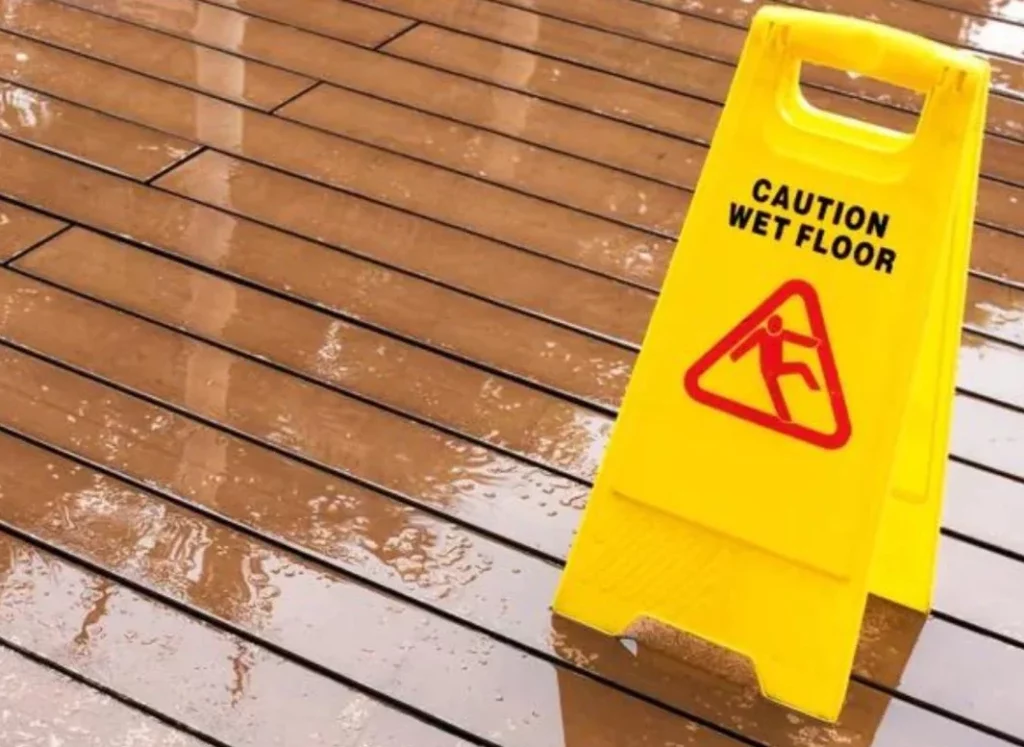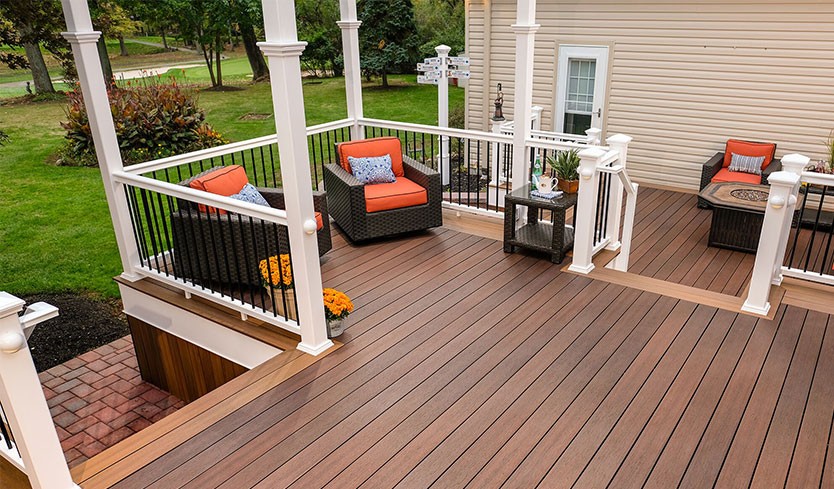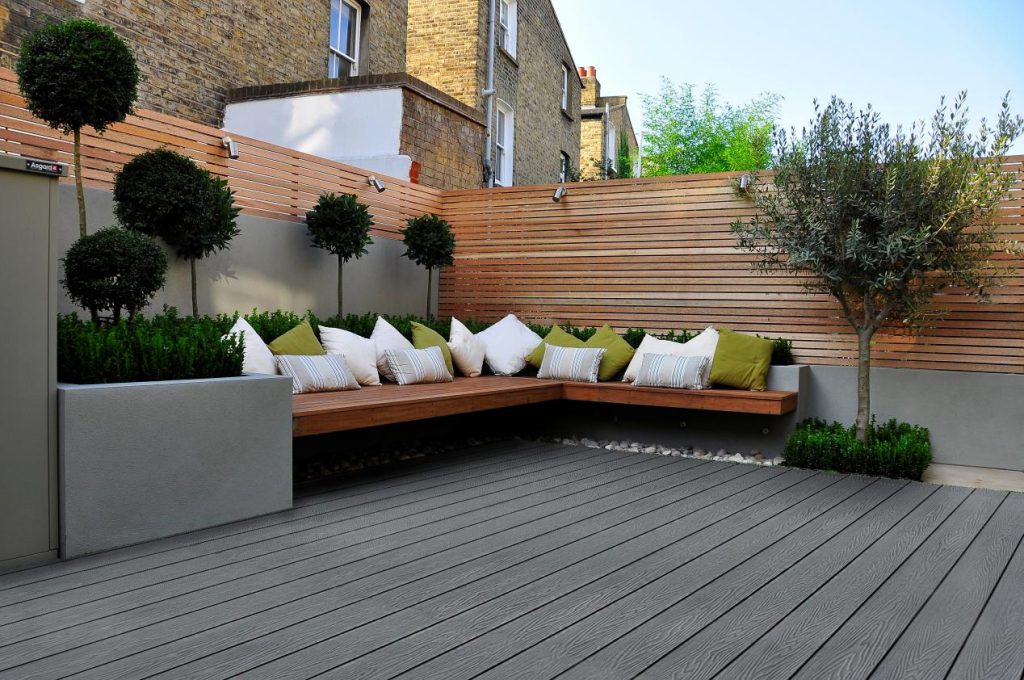When homeowners and builders choose a decking material, one of the most common concerns is safety—particularly how slippery the surface becomes when wet. Composite decking has become one of the most popular alternatives to natural wood because of its low maintenance, durability, and stylish appearance. But does composite decking get slippery when wet? The short answer is yes, it can—just like any surface. However, the degree of slipperiness varies greatly depending on the brand, surface texture, maintenance, and environmental conditions. This article explores how composite decking behaves in wet conditions, what causes slipperiness, and how to keep your deck safe and slip-resistant throughout the year.
Table of Contents
Understanding Composite Decking
Composite decking is a man-made material typically composed of a blend of wood fibers and plastic polymers. The exact composition varies by manufacturer, but generally, it consists of:
Recycled wood fibers or wood flour
Recycled polyethylene (PE), polypropylene (PP), or PVC plastics
Binding agents, colorants, and UV stabilizers
The result is a material that mimics the appearance of natural wood while offering far greater resistance to rot, insect damage, and moisture absorption.
Capped vs. Uncapped Composite Decking
Modern composite decking often comes in two main types:
Uncapped composite decking: The original form, with no outer protective layer. It can absorb some moisture and develop mold or mildew over time, leading to a slightly slicker surface in damp conditions.
Capped composite decking: A newer version that includes a polymer shell (cap) bonded to the core. This shell provides excellent resistance to moisture, stains, and fading, while also helping improve traction through textured finishes.

Why Decking Gets Slippery When Wet
To understand how composite decking performs, it helps to consider what causes any surface to become slippery when wet. The main factors include:
2.1 Water Film Formation
When rain or dew collects on the deck surface, it forms a thin layer of water. This film reduces the friction between shoes and the deck, increasing the chance of slipping. Even wood decks, concrete patios, or ceramic tiles can become slick under similar circumstances.
2.2 Algae and Mildew Growth
If your deck is in a shaded or humid area, it may develop patches of algae, mildew, or moss over time. These biological growths form a slippery layer that’s especially dangerous when wet. While composite materials are less porous than wood and resist decay, dirt and pollen accumulation can still encourage organic growth on the surface.
2.3 Surface Texture and Finish
The texture of your decking plays a major role in slip resistance. Smooth-surfaced boards, whether wood or composite, tend to be slicker than those with deep grain patterns or embossed textures. Manufacturers often design their boards with anti-slip embossing to provide traction even when the deck is wet.
2.4 Slope and Drainage
Decks built without proper slope or drainage tend to collect puddles, increasing the risk of slipping. Standing water also contributes to mold growth. The recommended deck slope is usually about 1/8 inch per foot, which helps water drain off efficiently.
2.5 Contaminants
Substances like oil, sunscreen, or spilled beverages can coat the deck surface and make it slippery. Even fine dust can combine with moisture to reduce grip underfoot.
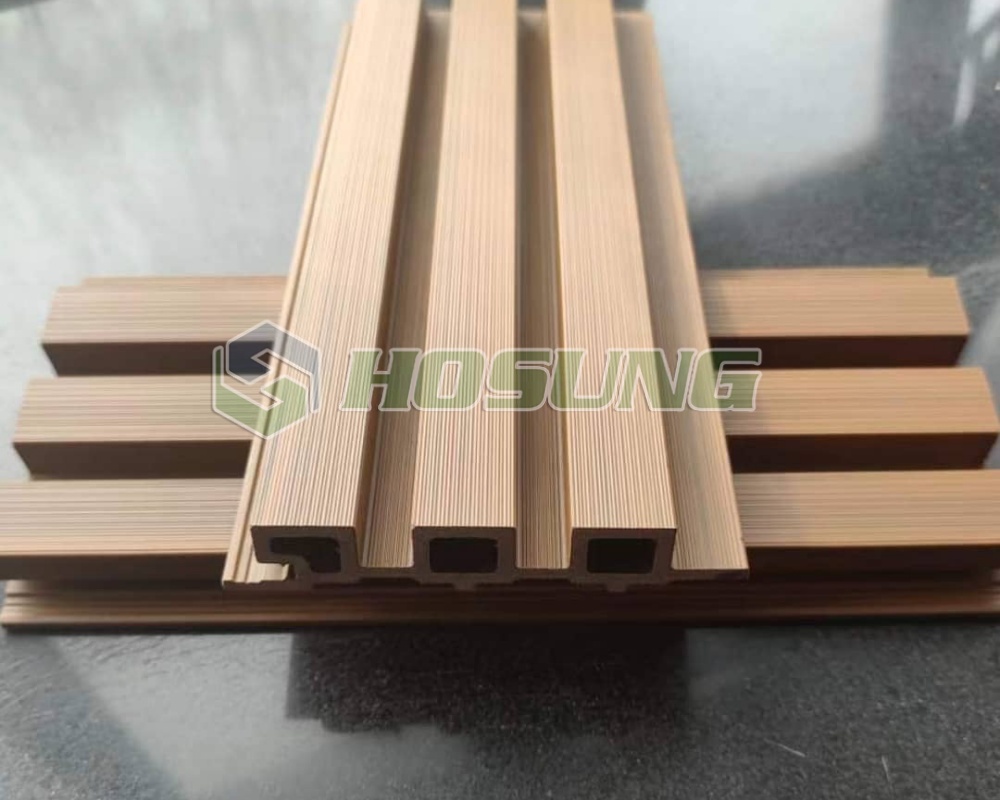
How Composite Decking Performs in Wet Conditions
Modern composite decking performs much better in wet environments than early versions did. Advances in material technology and manufacturing have improved surface grip, drainage, and mold resistance.
3.1 Slip Resistance Ratings
Slip resistance is often measured using a coefficient of friction (COF) test. Generally:
A COF value of 0.5 or above is considered slip-resistant under wet conditions (based on ASTM standards).
Many high-quality composite decking brands exceed this threshold, achieving wet COF ratings between 0.55 and 0.65.
These ratings are typically achieved through textured embossing, matte finishes, or micro-grooved patterns that improve traction.
3.2 Capped Composite and Water Behavior
Capped composite boards repel water effectively, preventing absorption into the material. This not only extends the life of the deck but also minimizes the growth of mold and mildew. However, the outer polymer shell can sometimes feel smoother, depending on the finish. To counter this, manufacturers design anti-slip surfaces that maintain traction even when wet.
3.3 Comparison with Other Materials
| Material | Slip Resistance When Wet | Maintenance | Durability | Comments |
|---|---|---|---|---|
| Natural Wood | Moderate to Poor (depends on texture and algae growth) | High | Moderate | Needs frequent sealing or sanding |
| Composite (Uncapped) | Moderate | Medium | Good | May grow mildew without cleaning |
| Composite (Capped) | Good to Excellent | Low | Excellent | Maintains grip with minimal care |
| PVC Decking | Excellent | Low | Very High | Textured plastic surface is slip-resistant |
| Concrete/Tile | Variable | Medium | High | Can be slippery unless textured or sealed properly |
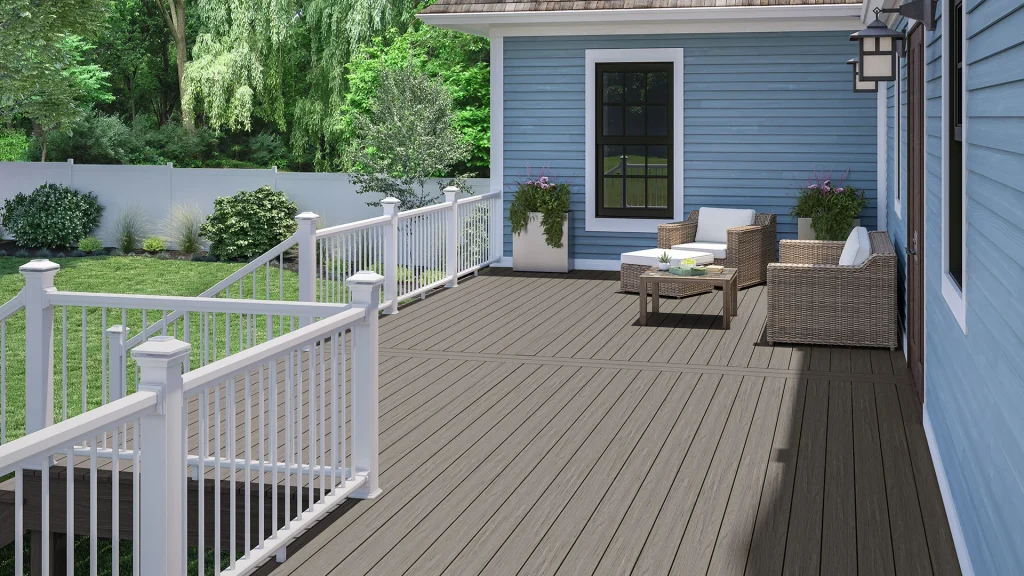
Factors That Influence Composite Deck Slipperiness
4.1 Climate
Regions with frequent rainfall or high humidity increase the likelihood of surface moisture. In such areas, regular cleaning becomes even more important.
4.2 Shading and Sunlight
Decks under trees, pergolas, or beside tall buildings receive less sunlight, meaning they dry more slowly and are more prone to algae buildup.
4.3 Maintenance Practices
A deck covered in dirt, pollen, or decomposing leaves provides an ideal environment for slippery buildup. Simple cleaning habits can make a major difference.
4.4 Deck Color
Darker colors absorb more heat and dry faster, reducing slipperiness after rain. However, in extremely hot climates, darker boards may feel warmer to the touch.
4.5 Foot Traffic and Usage
Areas around pools, spas, or outdoor kitchens experience more splashing and spills. In such zones, selecting decking with a proven anti-slip texture is especially important.
How to Prevent Composite Decking from Becoming Slippery
Fortunately, you can take several steps to maintain good traction on your composite deck all year round.
5.1 Regular Cleaning
Regular cleaning is the most effective defense against slippery surfaces. Here’s a recommended routine:
Sweep weekly to remove leaves and debris.
Wash monthly with a mild detergent and soft-bristle brush.
Rinse thoroughly with a garden hose to remove soap residues.
Avoid using harsh chemicals or wire brushes, as these can damage the surface cap or dull the finish.
5.2 Deep Cleaning for Mold or Algae
If your deck develops green or black patches, mix a solution of:
1 part white vinegar
3 parts warm water
Apply with a soft brush, scrub gently, and rinse thoroughly. Specialized composite deck cleaners are also available for stubborn growths.
5.3 Improve Drainage
Ensure your deck has adequate slope and that gaps between boards remain clear to allow water runoff. Clogged gaps can trap moisture and encourage mold.
5.4 Apply Anti-Slip Treatments (Optional)
You can add extra traction with:
Anti-slip mats or strips in high-traffic areas.
Textured or sand-added coatings designed for composite decking (always test first to avoid color changes).
Outdoor rugs made from quick-drying synthetic fibers.
5.5 Choose the Right Footwear
Encourage family members and guests to wear shoes with rubber soles when walking on wet decking. Bare feet or smooth sandals increase the risk of slipping.
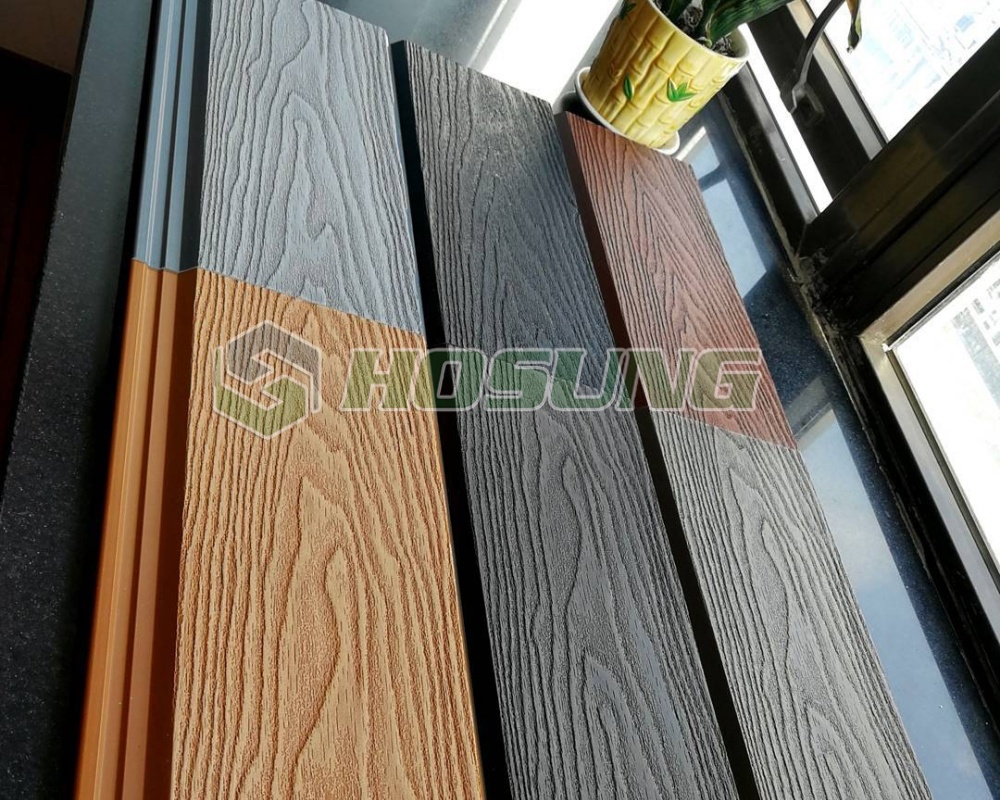
Seasonal Safety Tips
6.1 Spring
Clear away winter debris, dirt, and pollen.
Inspect gaps and screws for blockages or corrosion.
Consider applying a gentle cleaning agent before the rainy season.
6.2 Summer
Rinse the deck occasionally to remove dust and barbecue grease.
Encourage the use of sandals or pool shoes near water features.
6.3 Autumn
Keep the deck leaf-free to prevent staining and organic buildup.
Trim overhanging branches to increase sunlight and airflow.
6.4 Winter
Avoid using metal shovels or salt for snow removal; these can scratch or discolor composite surfaces.
Use a plastic shovel and calcium chloride if necessary.
Sweep regularly to prevent icy patches.
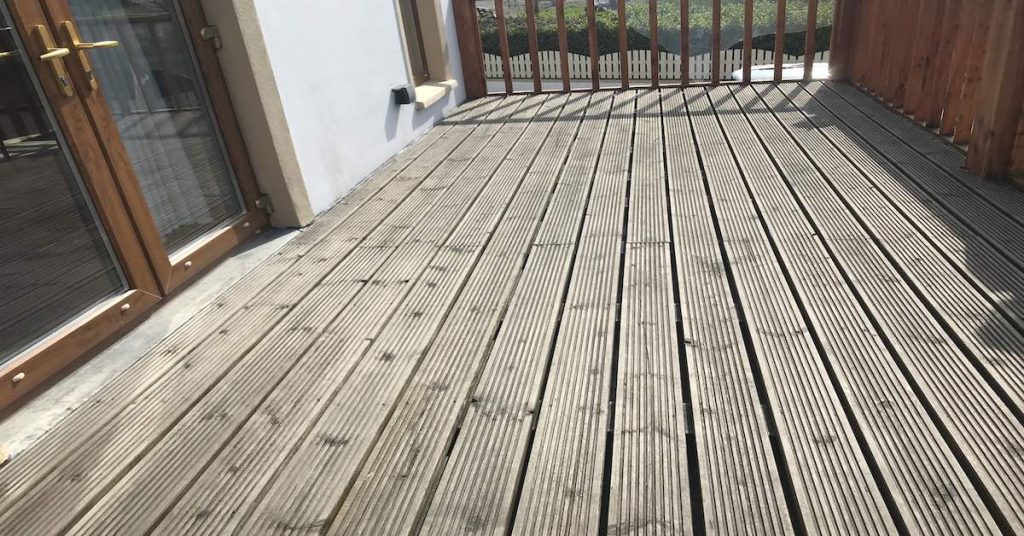
Testing Slip Resistance at Home
You don’t need specialized equipment to gauge how slippery your deck is. Try this simple test:
Choose a section of your deck.
Wet it with a hose.
Walk across wearing your usual footwear.
Notice whether your foot feels secure or unstable.
If it feels slick, try cleaning that area and retesting. This helps determine whether the issue is surface buildup or the deck’s texture itself.
Choosing Slip-Resistant Composite Decking
When shopping for new decking, ask manufacturers for slip resistance data or product testing results. Look for features such as:
Embossed or brushed texture
Deep wood-grain pattern
Matte or low-sheen finish
Wider grooves for drainage
Capped surface for stain and mold resistance
If you live in a wet climate or plan to install decking around a pool, prioritize these traits over purely aesthetic considerations.
Warranties and Certifications
Many reputable composite decking manufacturers include slip resistance certifications (ASTM, BS, or DIN standards). Review these documents to understand how the material performs in both wet and dry environments.
Final Thoughts: Does Composite Decking Get Slippery When Wet?
Yes—composite decking can get slippery when wet, but no more so than natural wood or other outdoor materials. The real difference lies in how well the decking is designed and maintained. Modern capped composites with textured finishes provide excellent traction, even in rainy conditions.
With proper installation, regular cleaning, and mindful design choices, your composite deck can remain safe and beautiful for decades.
If you are considering installing a new deck, it’s worth noting that some manufacturers, such as Hosung WPC, have developed composite decking with enhanced anti-slip surface technology. Their boards feature a finely textured finish and capped design that helps maintain traction in both wet and dry environments. While every surface can become damp and slightly slick under heavy rain, Hosung’s WPC boards are engineered to reduce this effect, making them a safe and stylish choice for outdoor spaces.

